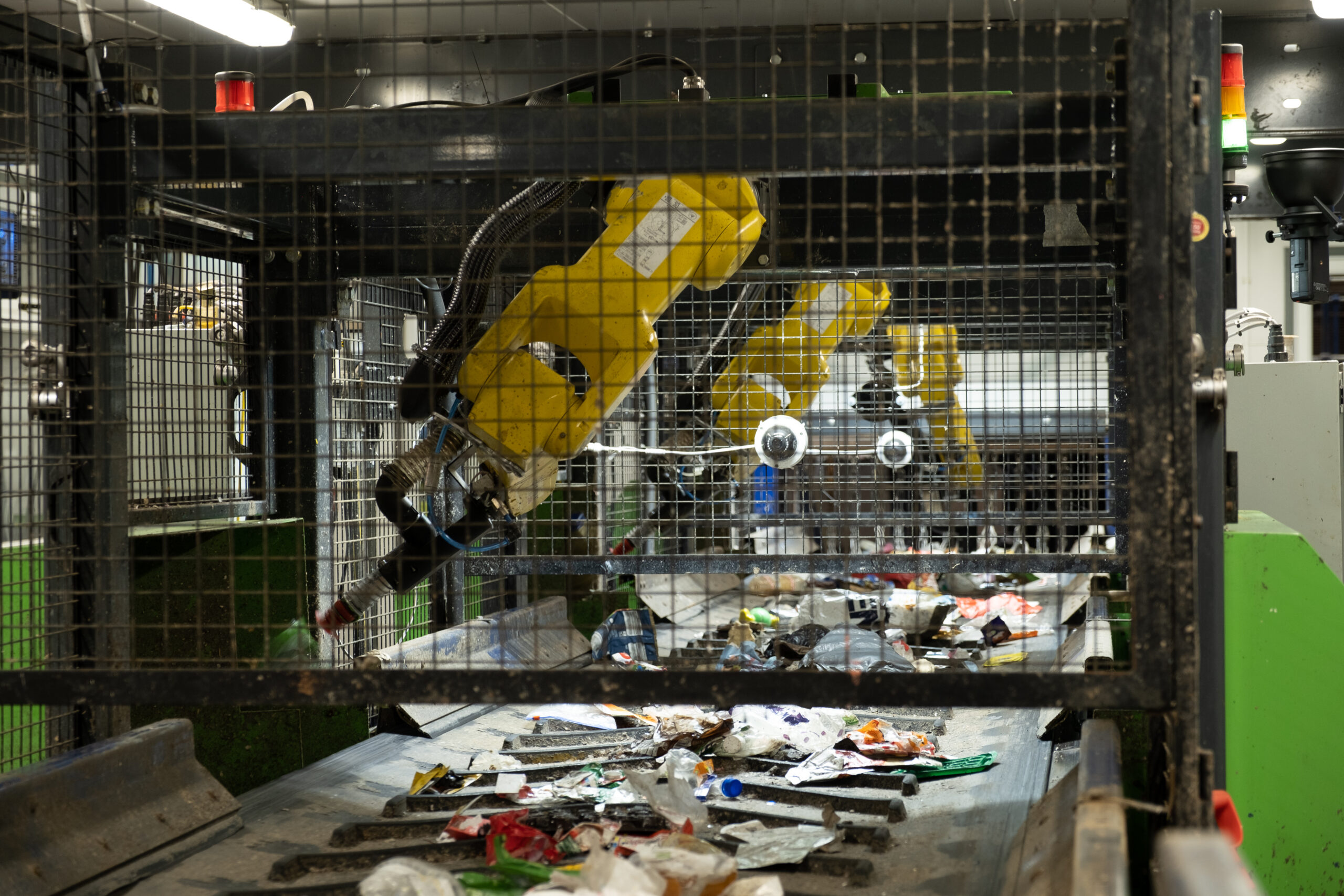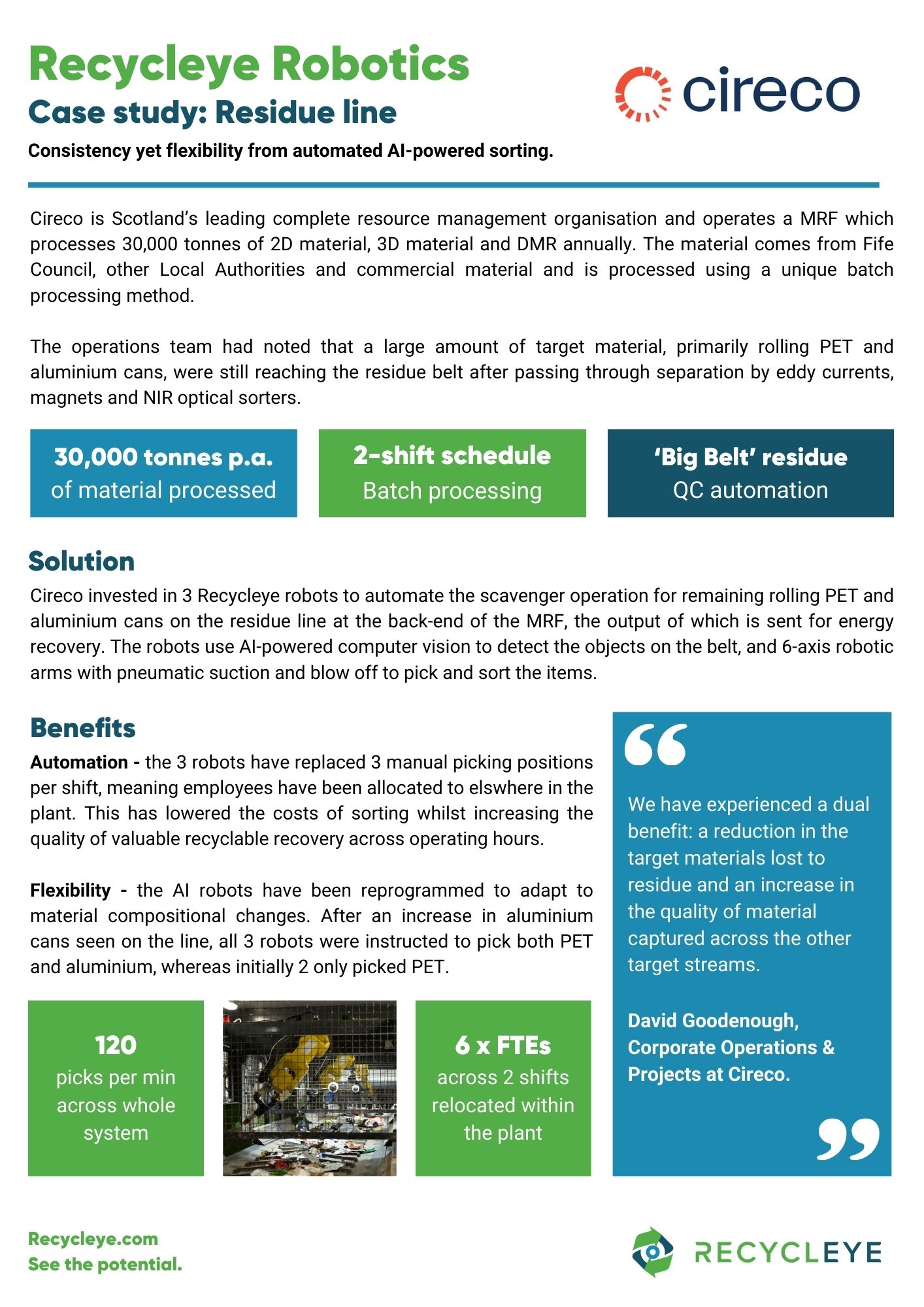Cireco Scotland was looking to automate recovery of rolling PET and aluminium cans at Dunfermline MRF.
The company was looking for technology to support increased consistency of picking and lower costs of sorting, in order to divert recyclables from going to energy recovery and maximise value from its material streams.
The Challenge
Cireco is Scotland’s leading complete resource management organisation and operates a MRF which processes 30,000 tonnes of 2D material, 3D material and DMR annually. The material comes from Fife Council, other Local Authorities and commercial material and is processed using a unique batch processing method.
The operations team had noted that a large amount of target material, primarily rolling PET and aluminium cans, were still reaching the residue belt after passing through separation by eddy currents, magnets and NIR optical sorters.

“We have experienced a dual benefit: a reduction in the target materials lost to residue and increase in the quality of the material captured across the other target streams.”
David Goodenough, Corporate Projects and Services, Cireco Scotland.
Outcomes
3 robots installed
6 FTEs relocated within plant
120 ppm across system
100% of material scanned
Cireco Scotland invested in 3 Recycleye robots to automate quality control on the residue line, consistently extracting missed PET bottles and aluminium cans from being sent to landfill. The system replaced 3 manual picking positions per shift, meaning 6 FTEs have been relocated to other lines within the MRF.
Identification and picking of recyclables on a residual line
Automation – the 3 robots have replaced 3 manual picking positions per shift, meaning employees have been allocated to elswhere in the plant. This has lowered the costs of sorting whilst increasing the quality of valuable recyclable recovery across operating hours.
Flexibility – the AI robots have been reprogrammed to adapt to material compositional changes. After an increase in aluminium cans seen on the line, all 3 robots were instructed to pick both PET and aluminium, whereas initially 2 only picked PET.
